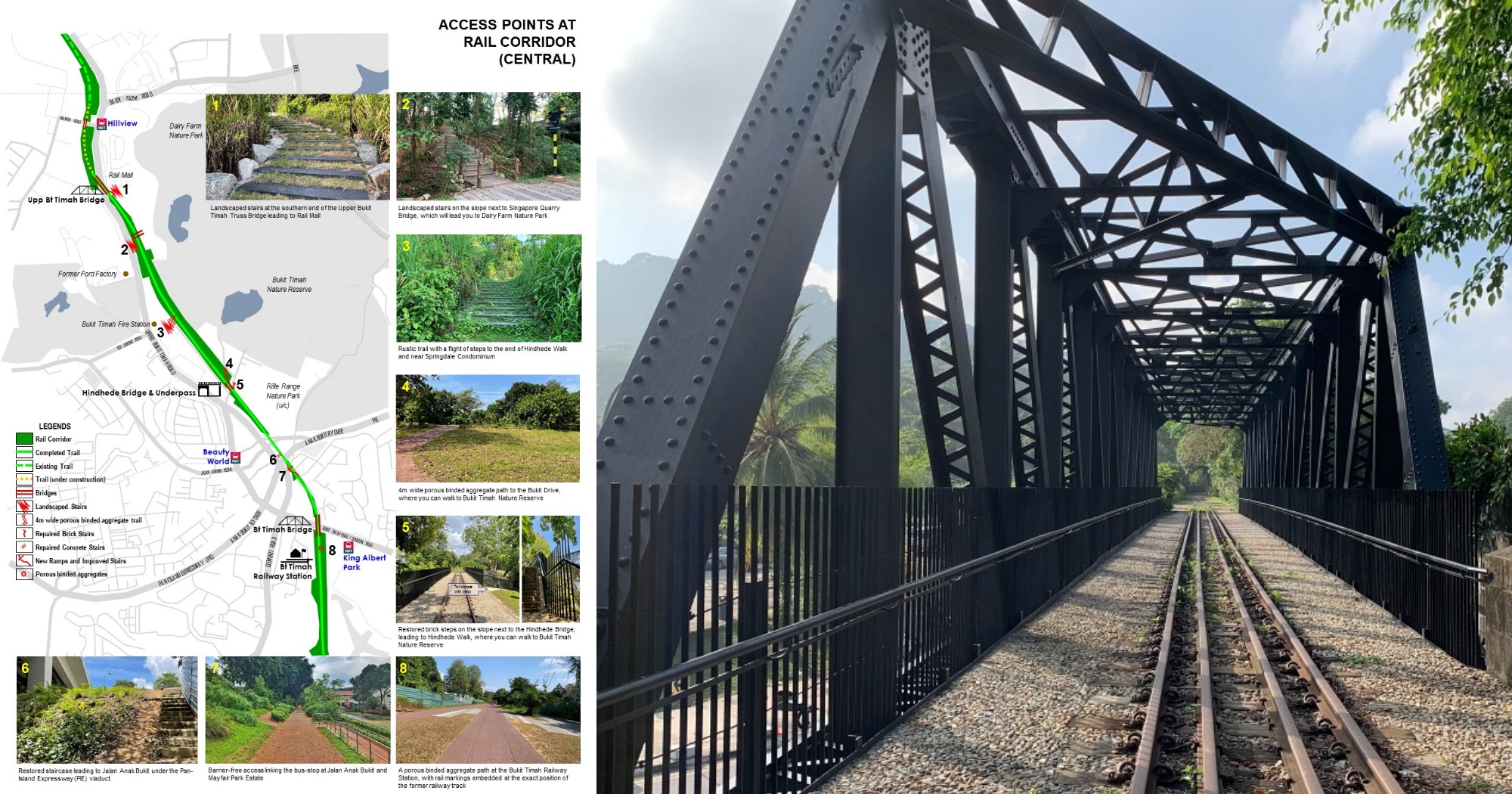The Rail Corridor (Central) has been refurbished and is now re-opened for public access.
The Rail Corridor (Central) is a 4km section stretching from The Rail Mall to the conserved Bukit Timah Railway Station near King Albert Park MRT station.
Prominent structures or landmarks along The Rail Corridor (Central) include the Hillview Bridge, the Upper Bukit Timah Road truss bridge, the Singapore Quarry Bridge, the Hindhede Bridge, the Bukit Timah Road truss bridge, and the Bukit Timah Railway Station.
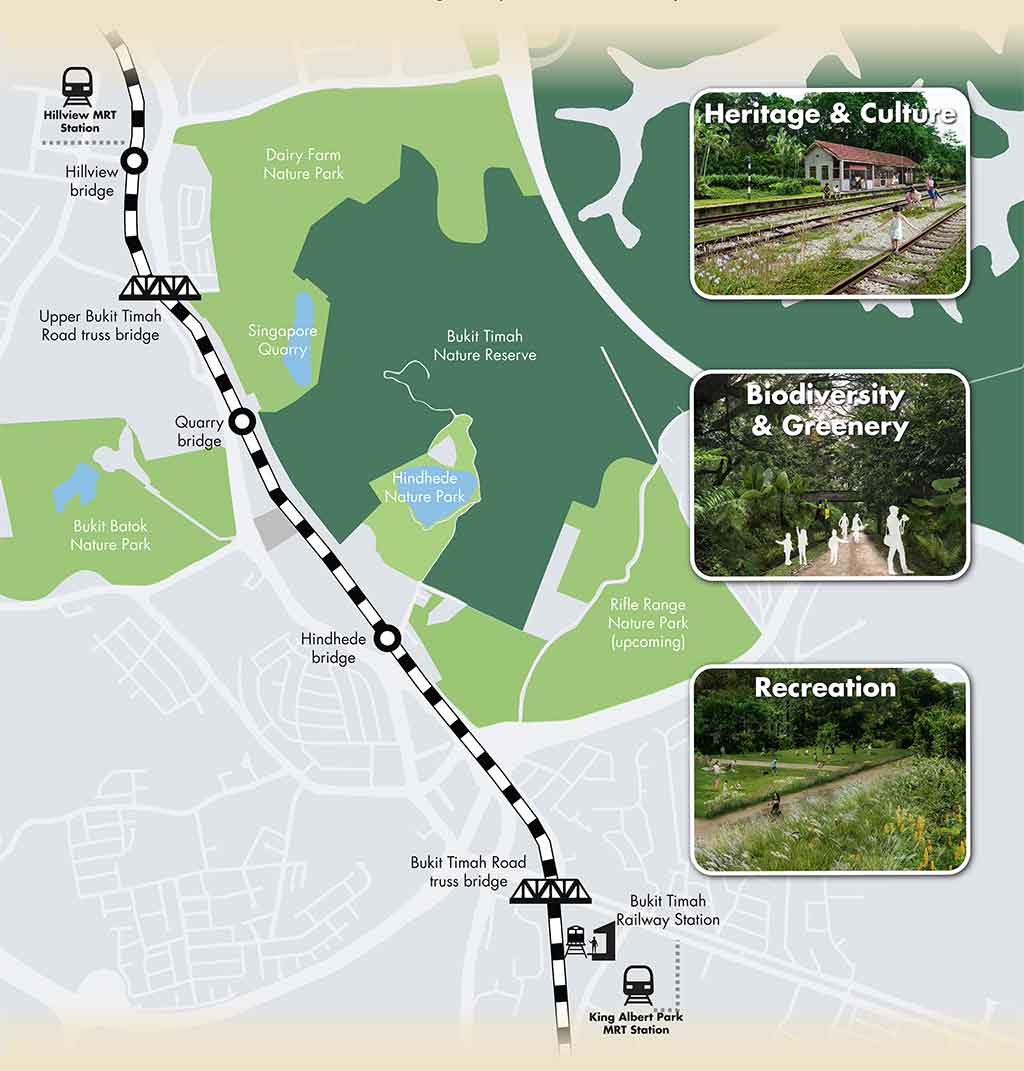
8 access points to get to the Rail Corridor (Central)
The trail along the renewed Rail Corridor (Central) now has eight different access points, which were sensitively built to simulate timber sleepers used in the old railway track:
- Landscaped stairs leading from The Rail Mall (map) to the southern end of the Upper Bukit Timah truss bridge.
- Landscaped stairs leading from Dairy Farm Nature Park to the trail, located near the Singapore Quarry Bridge.
- Rustic trail with a flight of stairs leading from the end of Hindhede Walk, near Springdale Condominium (map).
- 4m-wide path leading from Bukit Drive (map). This is accessible from Bukit Timah Nature Reserve.
- Restored flight of brick stairs next to Hindhede Bridge (map), leading from Hindhede Walk. This is accessible from Bukit Timah Nature Reserve.
- Restored staircase from Jalan Anak Bukit, under the PIE viaduct.
- Barrier-free access linking Jalan Anak Bukit and Mayfair Park estate.
- Path from the Bukit Timah Railway Station (map).
Here's a handy infographic showing the eight different access points along the trail:
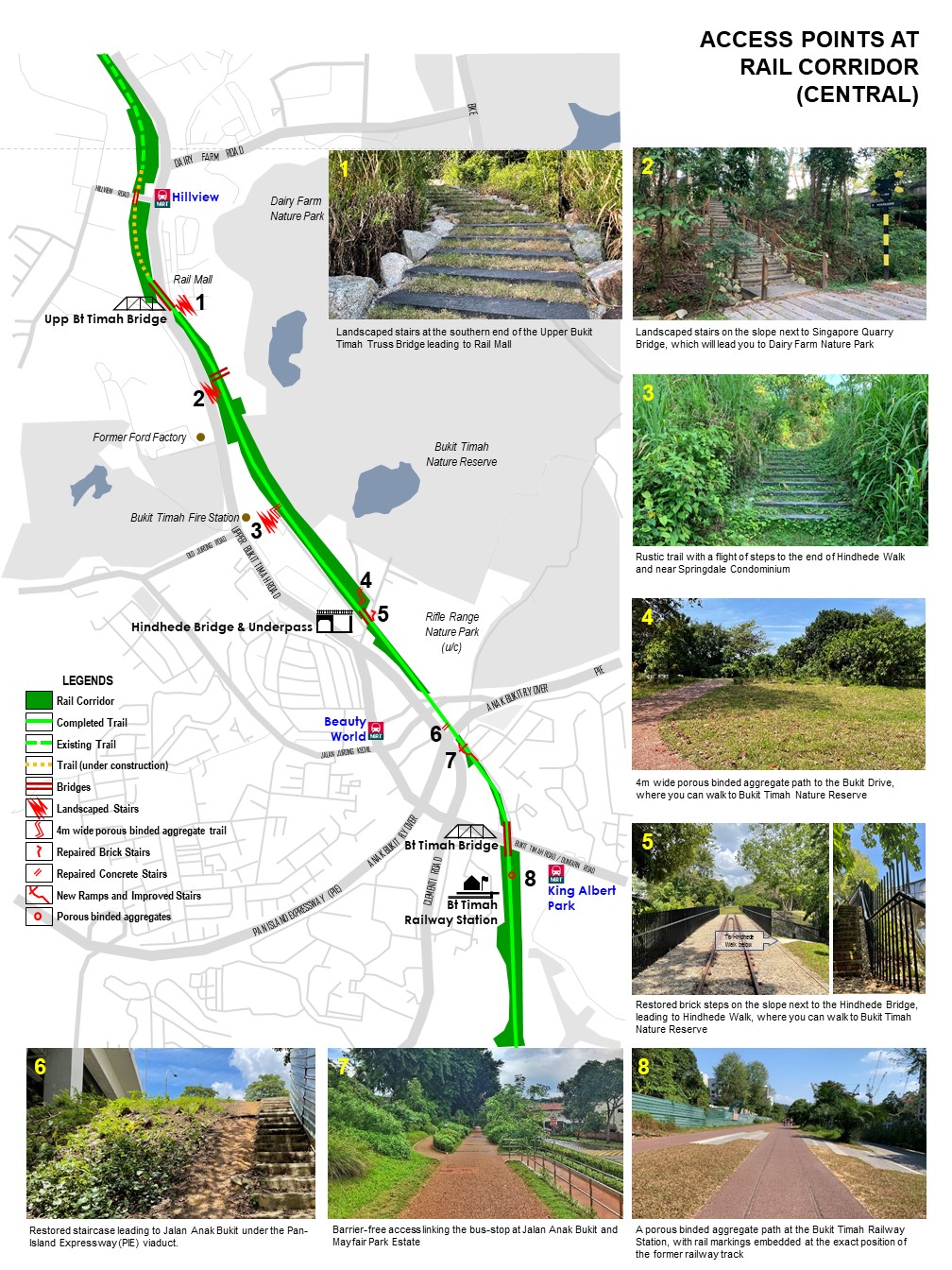
You can check out this article to read about the things that you can see along the trail:
Trail was restored sensitively
The Rail Corridor (Central) was also sensitively restored using materials that complement the character of the trail at different stretches.
Stretches of the trail that are next to natural areas have been kept rustic with grass and gravel finishes. On the other hand, sections of the trail which are closer to urban areas have been treated with an earth-coloured porous material which can drain rainwater easily.
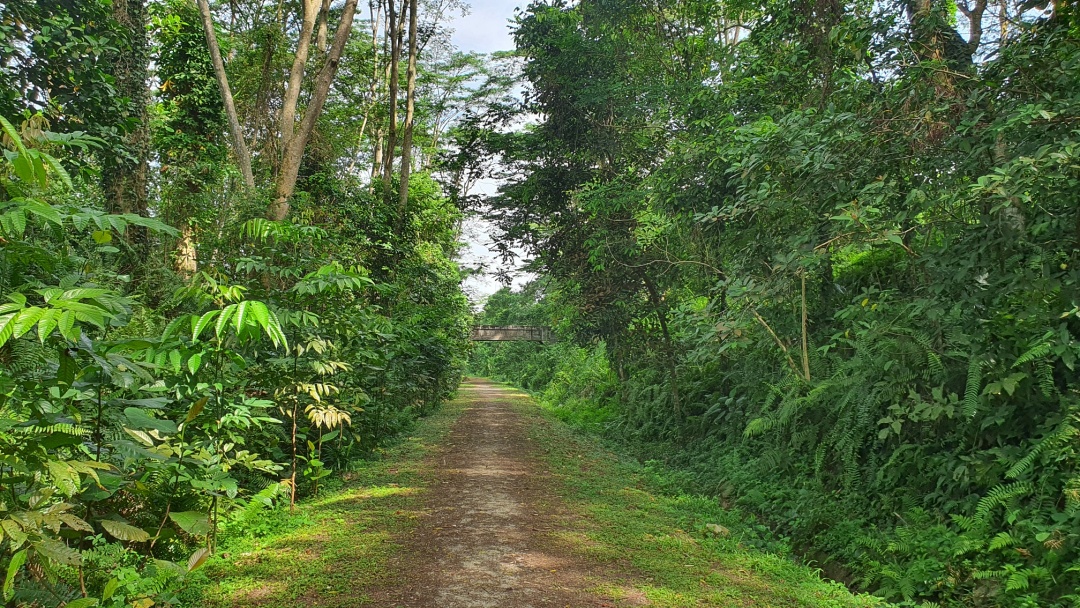 Strengthened trail with grass and gravel. Via URA.
Strengthened trail with grass and gravel. Via URA.
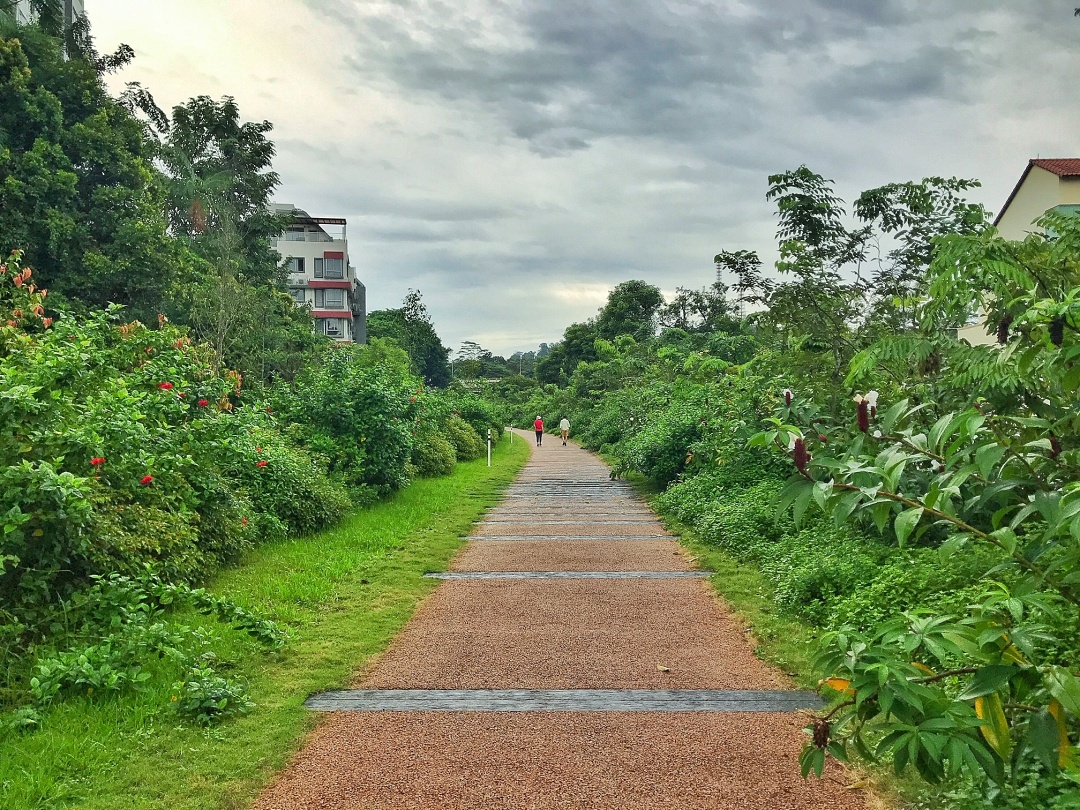 Porous trail near urban areas. Via URA
Porous trail near urban areas. Via URA
Bridges along the trail have also been fitted with railings for the public's safety.
 Via URA.
Via URA.
A belt of native forest in the area has also been restored, by removing non-native plant species (which grew due to spontaneous vegetation over the years) and planting over 1,500 native trees and shrubs (like the Red Tree Shrub and the Tampines Tree) along the Rail Corridor to provide passage, habitat, and a source of food for native fauna.
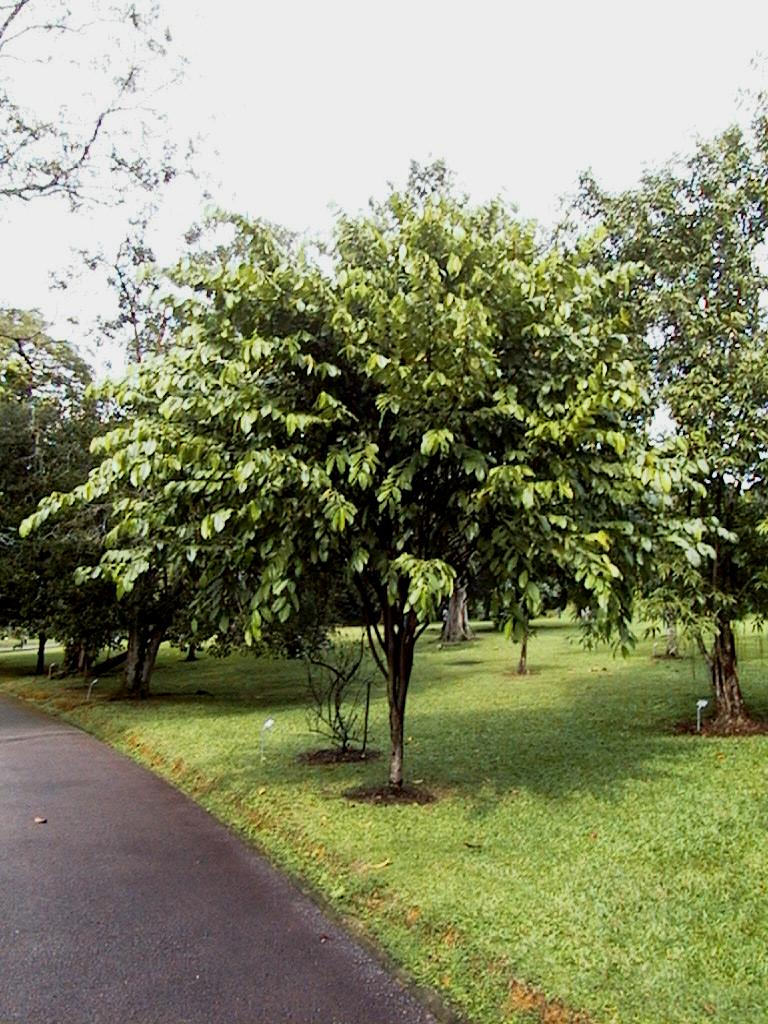 The Tampines Tree. Via Boo Chih Min, NParks Flora&Fauna Web
The Tampines Tree. Via Boo Chih Min, NParks Flora&Fauna Web
A naturalised stream was retained and enhanced to act as a freshwater fauna habitat for animals such as the Spine-tufted Skimmer, the Black-eyed Litter Frog and the Lowland Freshwater Crab.
Night lighting was not installed on the trail so as to allow nocturnal animals to use the trail at night.
In lieu of night lighting, NParks and URA installed reflector poles that double as distance markers. These will be able to guide trekkers in dim lighting at dawn and dusk.
To find out more about The Rail Corridor, you can head over here.
Top images via URA.
If you like what you read, follow us on Facebook, Instagram, Twitter and Telegram to get the latest updates.
